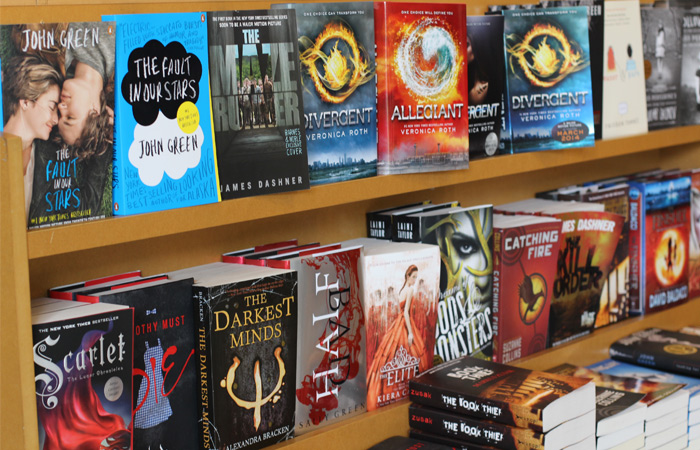Young adult books: overlooked
Image courtesy of barnesandnoble.com
A filled shelf of YA books at Barnes & Noble. YA literature is an integral part of daily culture and entertainment across the world.
February 1, 2022
Hunger Games. Princess Diaries. Sisterhood of the Traveling Pants. Holes.
Young Adult (YA) literature is an integral part of daily culture and entertainment. From movies and television shows, to readers cosplaying as characters on TikTok and Instagram, to dozens of shelves bursting from the seams in libraries and bookstores, YA literature has firmly made its mark on our daily lives within the past few decades.
Mainly marketed to children and teenagers, YA literature is seen by many as unrealistic, immature, and repetitive: the same characters, the same plot, the same relationships.
The main character is either secretly in love with their best friend they’ve known since they were three-years-old in a contemporary romance, or the “Chosen One” who discovered their magical powers capable of saving the entire world in a fantasy novel. Distant parents, awkward and quirky personalities, everyone having a perfect relationship by the time they’re sixteen.
Every. Single. Time.
It gets repetitive.
However, many adults see the vast world of YA literature in a very particular lens. Interestingly, according to a 2012 study, 55% of YA book buyers were 18-years-old or older, and 78% of the time, they were buying the books for their own leisure reading. Yet many adults still see YA literature as immature.
Yes, certain character tropes can get repeated a little too much for my taste, it gets tiring when every series ends with each character paired up in a happy relationship, and every once in a while I can predict a book’s ending without ever having read it before.
But not every book is like that.
YA literature spans from high fantasy to science fiction to contemporary romance to murder mysteries and everything between. Find the types of books and characters and plot you enjoy. If you don’t like cringe-worthy romances, don’t read them. But if you do, go ahead.
These books are geared to teenagers, but that doesn’t make all of them dumbed down, or stupid, or too unrealistic. It just means they’re geared to a different audience. The craft, the worldbuilding, the character complexity, and every other aspect of a YA book is exactly what one expects from a book geared to adults.
Sometimes the book is the most emotional, thought-provoking book you’ve ever read, sometimes it exists purely for the purpose of entertainment or laughter, sometimes it provides a good escape from a stressful world, and sometimes it allows the reader to live in another’s head for just a few minutes.
There will always be books with the same characters, the same plot, and the same relationships. And there will always be readers for those books.
But YA literature is so much more vast than that. There are books with characters who have ambitions and goals and greed. There are books with sad endings, books where things don’t always end up perfectly.
Books like “Six of Crows” by Leigh Bardugo, in which six teenage criminals, each with a traumatic past, attempt an impossible heist. Books like “They Both Die at the End” by Adam Silvera, in which the day you die can be predicted, and two boys with completely different lives are told they will die in 24 hours.
Books like “The Hate U Give,” by Angie Thomas, “The Cruel Prince,” by Holly Black, “We Hunt the Flame,” by Hafsah Faizal, and “The Inheritance Games,” by Jennifer Lynn Barnes.
Every single book you read impacts who you are as a person, and YA literature is shaping teenagers and young adults across the world. It challenges readers to make their own decisions, to choose who they want to be in life, and to change the world in whatever way they can.






